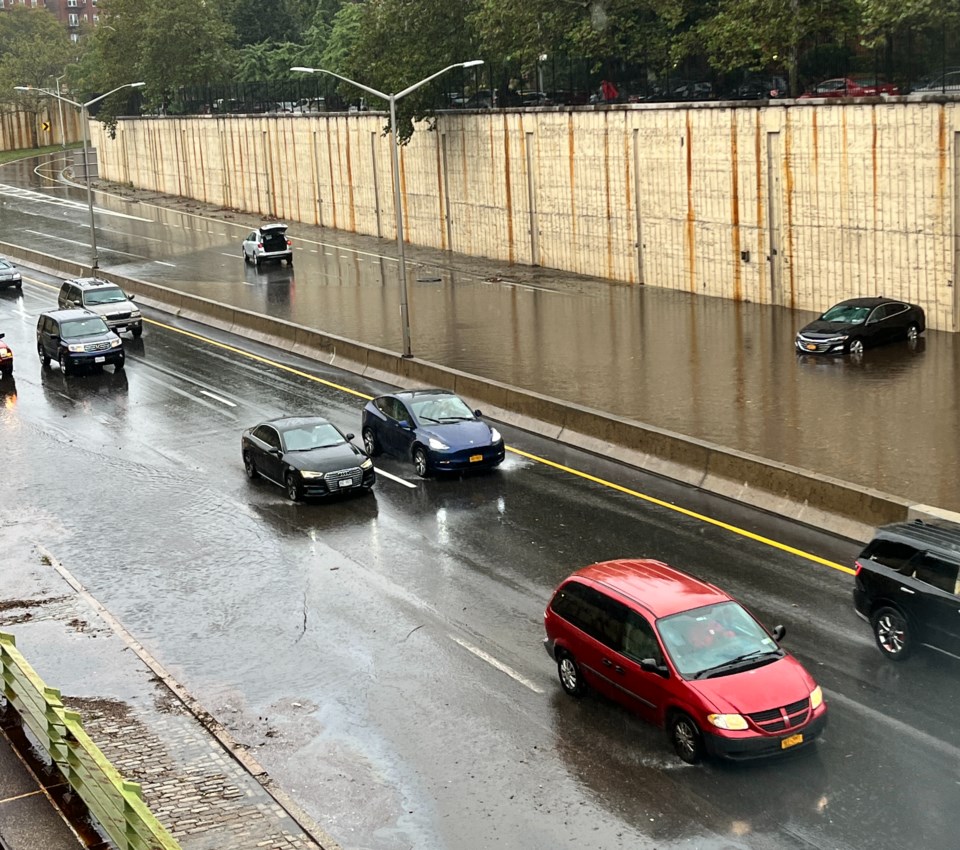Seven months after Tropical Storm Ophelia inundated New York City with over eight inches of rain, Comptroller Brad Lander said his office found the City's response to the deluge of rain was not enough and urged the mayor to beef up storm preparedness efforts.
Lander released findings of his office’s investigation, Is New York City Ready for Rain? on Monday, which analyzed the City’s storm operations, interagency coordination, emergency communications to the public, community preparedness and storm water infrastructure improvements, according to a news release.
The report said two-thrids of the catch basin cleaning trucks were out of service when the storm hit and only 2.7% of New Yorkers over the age of 16 received a NotifyNYC alert.
In addition, more than 60% of the City’s storm water infrastructure projects are behind schedule, with an average delay of nearly two years, and 69% of projects are over-budget, with an average budget overrun of 310%, according to the report.
On September 29, 2023, New York City experienced 8.65 inches of total rainfall as a result of the storm—at its peak, exceeding three inches per hour in parts of Brooklyn. The heaviest rains persisted for over an hour in southern Brooklyn and along the East River from DUMBO, through the Lower East Side, up through Astoria and East Harlem.
Real-time sensors—many of which had been added by NYC Department of Environmental Protection (DEP) in recent years as part of its storm preparation—recorded more than 24 inches of flooding in Gowanus, south Williamsburg, and Midland Beach, while parts of Southern Queens and coastal Staten Island saw significant flooding despite not receiving intense rainfall, pointing to the inadequacy of existing stormwater infrastructure.
The Fire Department rescued 11 people, including four from basement units. Flooding occurred at 45 subway stations and eight yards; the MTA suspended or saw severe disruptions to 11 subway lines, Metro-North services, and parts of the LIRR Far Rockaway and Long Island Branch lines while NYC Transit pumped four million gallons of water out of the subway system.
The Major Deegan Expressway, FDR Drive, Grand Central Parkway, Belt Parkway, and 4th Ave in Brooklyn were shut down; flooded portions of the Cross Island Parkway caused vehicles to be stuck and the overflow Bronx River flooded the Bronx River Parkway until 6:30am the following morning.
“Extreme storms are coming more frequently, so New York City must do the work to be more prepared for them,” said Lander. “That means modernizing our catch basins, making sure the cleaning trucks are in service, and notifying New Yorkers—especially the most vulnerable—more swiftly before the next storm hits. And it means focusing capital process reforms and leadership attention on stormwater infrastructure improvements, so those projects don’t languish for decades while the climate crisis moves faster than we do.”




